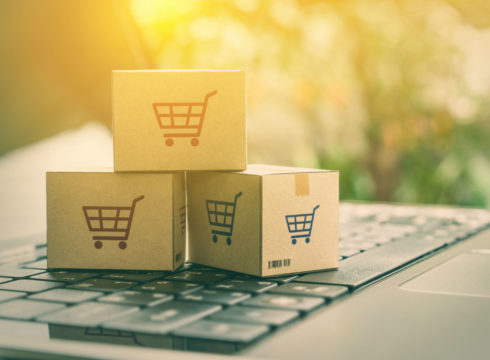SUMMARY
Ecommerce companies may post a 70% jump in consumers with 45-50 Mn digital buyers
Over 50% sales likely to come from Tier-II cities
Etailers have started working with brands, sellers and logistics players in the run-up to the big sale likely next month
Inc42 Daily Brief
Stay Ahead With Daily News & Analysis on India’s Tech & Startup Economy
If estimates released by market research firm Redseer are to go by, ecommerce companies may post a 70% jump in consumers with 45-50 Mn digital buyers. Of these, over 50% are likely to be from Tier-II cities. It is projected that the entire festive month is expected to clock gross sales of $7 billion in 2020 against nearly $4 billion last year, a 75% jump.
The season is set to be dominated by a fight for market share among three big online platforms — Amazon, Walmart-owned Flipkart and Reliance JioMart.
Though the dates of the five-day sale events of Flipkart, Amazon India and others are yet to be released, etailers have started working with brands, sellers and logistics players in the run-up to the event likely next month.
Interestingly, in 2019, ecommerce giants Flipkart and Amazon recorded a combined gross transaction value of $4.3 Bn or INR 31K Cr in India during their respective festive season sales this Diwali.
However, the numbers fell short of the expected $5 Bn in sales as per an unconfirmed RedSeer Consulting report. The report also spoke of other metrics that might clue observers into which platform had the more successful Diwali.
In terms of average order value, Flipkart reportedly stood at INR 1.9K versus INR 1.4K on Amazon. Flipkart led with 64% share of the combined gross sales, while Amazon continued to show a higher net promoter score (NPS) which gauges customer loyalty.
In terms of gross units shipped for Flipkart was 56% while Amazon’s was 44%. Customer cancellations were lower on Amazon, while Flipkart led in terms of reach and brand recall in Tier 2. Interestingly, when it came to metro cities, Amazon led by a single percentage point compared to Flipkart, which also indicates that Flipkart did manage to do better with Tier 2 and lower audiences.
Tougher Challenges
However, unlike previous years, ecommerce players will have to keep in mind government norms to comply with the new consumer protection rules. The mandatory listing of ‘country of origin’ for products listed is still a sticky issue. In August, ecommerce industry associations had sought a 6-7 months extension from the government to comply with the new consumer protection rules. Other key provisions of the Consumer Protection (Ecommerce) Rules, 2020, include the appointment of grievance offers and resolution of consumer complaints within one month of receiving the complaint, among other such provisions.
In July, the Department for Promotion of Industry and Internal Trade (DPIIT) had proposed August 1 as the deadline for etailers to display ‘country of origin’ information for all products being retailed on their website.
Will Discounts Be History?
The ecommerce companies have always been enthusiastic about discounts as it helps them drive sales during peak seasons. One of the biggest sales of the year is the festive season sale held between Diwali and New Year. It is no less than the Indian version of ‘Black Friday’ sales, and makes up 60% of the sales, compared to their annual sales.
Last year, ecommerce giants Flipkart and Amazon recorded a combined gross merchandise value of $3 Bn or INR 19K Cr in India during their respective festive season sales, despite the economic slowdown. Both these platforms made up for almost 90% of the overall ecommerce sales during the gifting season.
According to the RedSeer Consulting report, Flipkart reportedly stood at INR 1.9K versus INR 1.4K on Amazon. Flipkart led with a 64% share of the combined gross sales, while Amazon continued to show a higher net promoter score (NPS) which gauges customer loyalty.
In terms of gross units shipped for Flipkart was 56% while Amazon’s was 44%. But customer cancellations were lower on Amazon, while Flipkart led in terms of reach and brand recall in Tier 2. Flipkart left the US-based Amazon way behind with its 70% market share. At the same time, Flipkart and its subsidiaries Myntra and Jabong controlled 80% of the entire online market for fashion in the five-day sale.
US-based market research company Forrester Research noted the Indian ecommerce segment is expected to grow by 6%, amounting to $35.5 Bn this year. However, compared to last year, the firm would also seek a hike of $2 Bn due to the pandemic. It noted the groceries segment will drive the sales of ecommerce additional $1.3 Bn, leading to $3 Bn overall sales.
Note: We at Inc42 take our ethics very seriously. More information about it can be found here.


